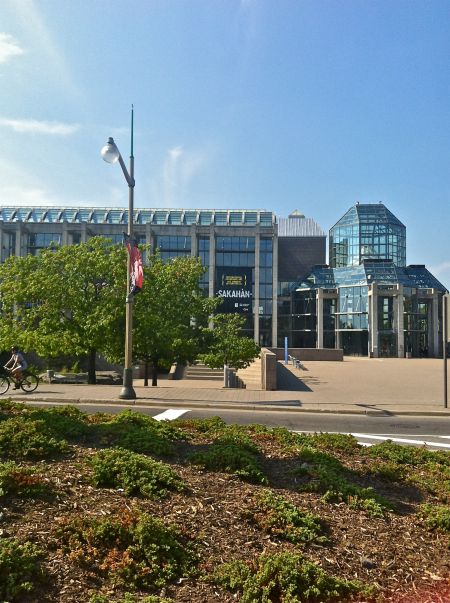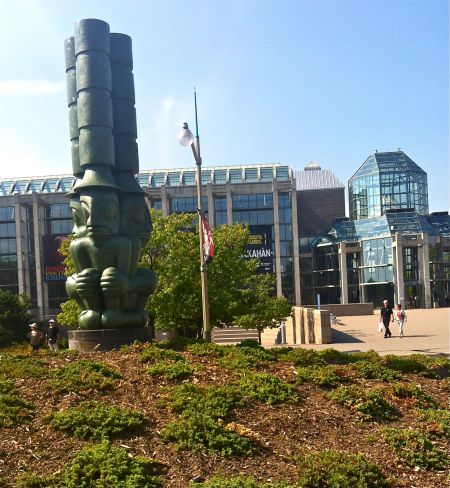As summer draws to a close, I scurry to enjoy all the activities I had planned to complete during the season.
One such activity I enjoyed recently was SAKAHÀN, meaning light a fire in Algonquin, the contemporary art exhibition of indigenous artists of the world at the National Gallery of Canada. It spans sixteen countries, like Australia, India, United States, Taiwan, Mexico, besides Canada. The exhibition commenced May 17 and runs till September 02, 2013. The exhibition has many partner galleries and events. For more information visit www.gallery.ca/sakahan.
At the entrance of the exhibition was a poem by a local artist Albert Dumont transcribed on the wall. The writing on the wall read:
"A sacred fire sings a song: a melody that attracts fish, birds, animals and insects. A sacred fire ignited after the moon has risen burns in the centre of a circle of its own creation. All that is alive in this sacred circle of light has nothing to fear; evil and wickedness cannot enter there."
If you have ever had the pleasure of attending one of Dumont’s poetry readings, this transcription was very apropos as he has a gift for igniting the reverie. Dumont is an Algonquin from the First Nation community of Kitigan Zibi Anishinabeg in Quebec, residing in Ottawa, Ontario. He is an elder who blessed the commencement of SAKAHÀN on May 16, 2013; a video of his blessing can be found below:
http://youtu.be/idV8Rd5vWos
The exhibition surpassed my expectations as I was amazed at the ingenuity of the artists who managed to marry medium, message, and aesthetic. Some installations enlightened about the aboriginal cultures of the world; some installations highlighted the history and struggles of the aboriginal people with imperialism and colonialism; some ignited contemplation of my very own human experiences; or some I just wanted to display on my dining room wall.
As the doors flung open, immediately I was struck by Boudoir de Berdashe 2007 from Kent Monkman, Cree residing in Toronto, Ontario. This is a ceiling high multi-media installation, a tepee made from silk, brocade, and fringe(1) complete with a crystal chandelier. Boudoir de Berdashe is interactive as we are permitted to enter the tepee which is equipped with satin and mahogany settees where we can lounge while viewing a double screened, sepia silent movie projected above an antique chaise lounge and vintage Louis Vuitton luggage (please do not touch). The movie certainly ignited a few chuckles. Monkman has a flair for extravagance as later, yet again, I was struck by a wall high & wide acrylic on canvas, Triumph of Mischief 2009.
Toronto based Saulteaux First Nation's Robert Houle’s multi-media Paris/Ojiibwa 2009-10 sparked sorrow and melancholy as he paid tribute to four dancers who went to Paris in 1845 to dance for the French King; all four were killed by small pox. The installation cannot be described but has to be experienced to comprehend it.
Australian aboriginal Richard Bell’s oil on canvas, Contemporary & indigenous 2009, makes us question our stereotypes. Is it genocide forcing those we perceive as different from us into the proverbial stereotypical boxes? Why can’t we accept people’s aboriginality while still including their contemporaneity?
The exhibition extends to the second floor with prints and sketches. Anishinaabe Rebecca Blemore’s Fringe 2008 shows a woman photographed from behind; she has a wound which extends across her back. Belmore invokes us if we see the injury or the healing?
I went to SAKAHÀN as an obligation since I reside on unceded Algonquin territory; I left enriched. I was enlightened on my own artistic direction which I have contemplated. My creativity SAKAHÀNed.
(1) The description is my own perception of the materials used and may not be exact ones the artist used.


